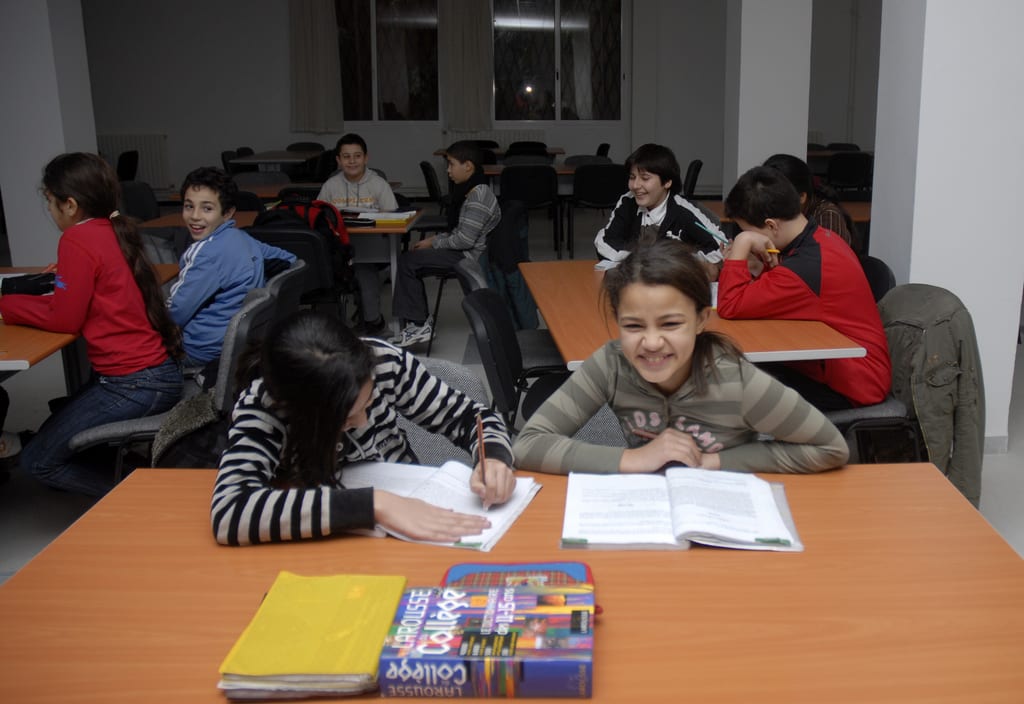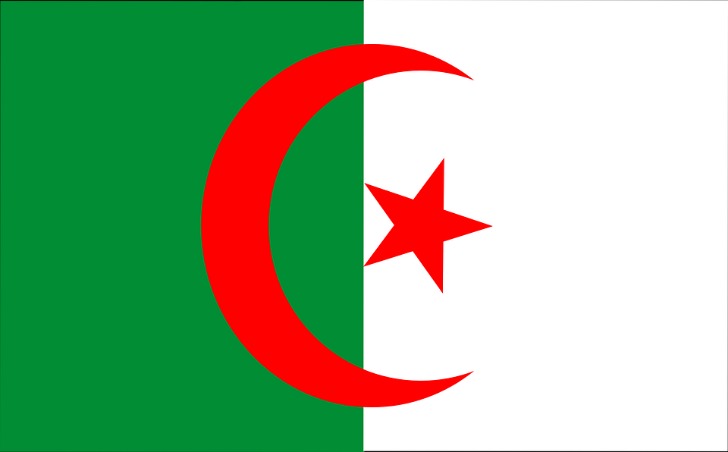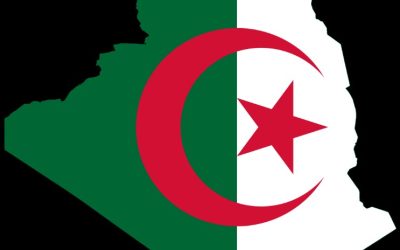Algiers: The Capital and Largest City
Algiers, the capital and largest city of Algeria, stands as a vibrant hub of history, culture, and economic activity. Located along the Mediterranean coast, this cosmopolitan city seamlessly blends ancient heritage with modern development. As the political and administrative center of the country, Algiers plays a crucial role in shaping Algeria’s identity and future.
Historical Significance of Algiers
Algiers, the capital and largest city of Algeria, holds a prominent place in both the country’s political and cultural landscape. Located along the Mediterranean coast, it serves as the economic hub and main port of Algeria, fostering trade and commerce. The city boasts a rich history that dates back to ancient times, with influences from Phoenician, Roman, Ottoman, and French civilizations, which have shaped its diverse architectural and cultural identity. Throughout its history, Algiers has been a focal point for resistance and independence movements, especially during the Algerian War of Independence, making it a symbol of national pride. Its historical significance is also reflected in iconic sites such as the Casbah, a UNESCO World Heritage site, and numerous mosques, palaces, and museums that showcase its complex heritage. As an urban center, Algiers continues to grow and modernize while preserving its historical roots, standing as a testament to Algeria’s dynamic history and resilient spirit.
Major Landmarks and Attractions
Algiers, the capital and largest city of Algeria, is a vibrant metropolis rich in history and culture. Situated along the Mediterranean coast, it serves as the political, economic, and cultural heart of the country. The city seamlessly blends historic architecture with modern developments, making it a fascinating destination for visitors and a dynamic place for residents.
Among the major landmarks and attractions in Algiers, the Kasbah of Algiers stands out as a UNESCO World Heritage site. This historic medina features narrow winding streets, traditional markets, and centuries-old buildings that showcase Ottoman and Islamic influences. The iconic Jardin d’Essai, a botanical garden established in the 19th century, offers a lush escape with diverse plant species. The Notre Dame d’Afrique, a striking Catholic basilica perched on a hill overlooking the city, provides panoramic views of the Mediterranean and is renowned for its beautiful mosaics and architecture.
The Martyrs’ Memorial, also known as the Maqam Echahid, is a prominent monument commemorating the Algerian War of Independence. Its impressive concrete structure symbolizes the nation’s struggle for freedom and is a must-visit site. Additionally, the Palais des Raïs, a historic fortress and residence of Ottoman rulers, offers insight into Algiers’ past. Visitors can also explore the lively neighborhoods, bustling souks, and waterfront promenades that capture the city’s energetic atmosphere.
Economy and Cultural Influence
Algiers, the capital and largest city of Algeria, serves as the political, economic, and cultural hub of the country. Located along the Mediterranean coast, it boasts a rich history reflected in its diverse architecture, from Ottoman palaces to modern skyscrapers. The city has a vibrant atmosphere with bustling markets, historical sites, and a lively nightlife, making it a central point for both residents and visitors.
The economy of Algiers is a significant driver of Algeria’s overall prosperity, with major sectors including oil and gas, manufacturing, and services. As the nation’s economic powerhouse, it attracts investment and hosts numerous businesses, contributing substantially to the country’s GDP. The port of Algiers is a crucial strategic and commercial center, facilitating trade and commerce across the Mediterranean and beyond.
Culturally, Algiers holds a prominent position in the Arab world and Africa. It is renowned for its historic landmarks such as the Kasbah, a UNESCO World Heritage site, which exemplifies its rich Islamic and colonial heritage. The city also hosts a variety of cultural festivals, museums, and theaters, reflecting its diverse artistic traditions and vibrant cultural scene. Overall, Algiers stands out as a city of historical significance, economic strength, and cultural influence in the region.
Oran: The Mediterranean Gateway
Oran, known as the Mediterranean Gateway, is one of Algeria’s most vibrant and historically significant cities. Located along the coast, it serves as a major port and cultural hub, blending rich tradition with modern development. Its strategic position has made it a key player in both commerce and culture in the region, drawing visitors and residents alike to experience its dynamic atmosphere and diverse heritage.
Historical and Cultural Background
Oran, often referred to as the Mediterranean Gateway, is a vibrant city in Algeria with a rich historical and cultural background that reflects its strategic importance and diverse influences. Situated along the coast, Oran has served as a vital port and commercial hub for centuries, shaping its unique identity through interactions with various civilizations.
- Ancient Roots and Strategic Position: Oran’s history dates back to Phoenician and Roman times, benefiting from its location on the Mediterranean Sea. This position made it a key maritime hub for trade and military endeavors.
- Islamic Influence and Ottoman Era: During the Ottoman period, Oran developed significantly, with the construction of mosques, fortresses, and markets that remain central to its cultural landscape today.
- Colonial Period and Modern Development: French colonization in the 19th century introduced European architectural styles and urban planning, which continue to influence the city’s appearance and infrastructure.
- Cultural Diversity: Oran’s population is a blend of Arab, Berber, Spanish, and French communities, contributing to a rich mix of languages, cuisines, music, and traditions that define its cultural identity.
- Historical Landmarks: Notable sites include the Santa Cruz Fortress, the Great Mosque, and numerous colonial-era buildings, each reflecting different periods of Oran’s history.
Main Sights and Tourist Destinations
Oran, known as the Mediterranean Gateway, is a vibrant port city in Algeria that boasts a rich history and a lively cultural scene. It serves as a vital economic and cultural hub, offering visitors a unique blend of tradition and modernity.
One of the main sights in Oran is the Santa Cruz Fort, perched atop a hill with stunning panoramic views of the city and the sea. The historic fort dates back centuries and provides insights into the city’s strategic importance throughout history. Another notable landmark is the Great Mosque of Oran, a beautiful example of Islamic architecture that reflects the city’s deep religious roots.
Visitors can explore the lively Corniche promenade, lined with cafes, shops, and bustling markets, offering a taste of local culture and cuisine. The Arabic and French colonial architecture scattered throughout the city add to its charm and character. For those interested in history and culture, the Museum of Modern Art and the Bey’s Palace provide engaging exhibits and a glimpse into Oran’s diverse heritage.
Additionally, the surrounding beaches and coastal areas make Oran an ideal destination for relaxation, swimming, and enjoying fresh seafood. The city’s vibrant nightlife, with numerous music venues and cultural festivals, further highlights its status as a key cultural hotspot in Algeria.
Economic Activities and Urban Development
Oran, known as the Mediterranean Gateway, is a key city in Algeria that plays a vital role in the country’s economic and urban landscape. Situated along the coast, it serves as a major port and commercial hub, facilitating trade and connectivity between Algeria and the broader Mediterranean region. The city’s strategic location has contributed to its development as a center for maritime activities, logistics, and industry.
Economically, Oran benefits from diverse activities including shipbuilding, petrochemicals, manufacturing, and transportation services. Its port is one of the largest in Algeria, handling significant cargo volumes and supporting regional commerce. The city also hosts numerous markets, factories, and industrial zones that drive local employment and contribute to national economic growth.
Urban development in Oran has been characterized by rapid expansion and modernization efforts. The city features a mix of historic sites, modern infrastructure, residential neighborhoods, and commercial districts. Efforts to improve transportation networks, such as roads and public transit, have enhanced connectivity within the city and to other regions. As a vibrant economic and cultural center, Oran continues to evolve while maintaining its rich historical heritage, making it a crucial component of Algeria’s national identity and development trajectory.
Constantine: The City of Bridges
Constantine: The City of Bridges is a captivating city in Algeria renowned for its stunning architecture and historic significance. Nestled along deep valleys and dramatic gorges, this city is famous for its numerous bridges that connect different parts of the city, earning it the nickname “City of Bridges.” With a rich history dating back to ancient times, Constantine offers a unique blend of culture, innovation, and scenic beauty, making it a must-visit destination for those exploring Algerian cities.
Historical Evolution and Architecture
Constantine, often referred to as the City of Bridges, is a historically rich city located in northeastern Algeria. Its unique geography, characterized by deep ravines and rugged hills, has significantly shaped its urban development and architectural landscape. The city’s strategic position has made it a vital hub throughout various periods, from the Roman era to modern times, contributing to its diverse cultural heritage.
Throughout its history, Constantine has undergone significant evolution, influenced by successive civilizations including Romans, Byzantines, Ottomans, and French colonizers. Each period left its mark, evident in the city’s archaeological sites, fortifications, and colonial architecture. The city’s historical evolution has been marked by the construction of numerous bridges, connecting its parts across deep valleys, which has become a defining feature of its urban identity.
The architecture of Constantine is a testament to its dynamic history and geographical challenges. Notable structures include ancient Roman bridges such as the Sidi Rached Bridge, the dramatic suspension bridges, and the Ottoman-era fortresses. The blend of ancient relics with colonial-era buildings creates a unique architectural tapestry, reflecting the city’s resilience and its ability to adapt to its challenging landscape over centuries.
Key Landmarks and Historic Sites
Constantine, also known as the City of Bridges, is a captivating city in Algeria renowned for its dramatic landscapes and rich history. Perched atop numerous deep gorges, Constantine offers stunning views and a unique urban landscape connected by a series of impressive bridges. The city has a long history, dating back to ancient times, and boasts a variety of key landmarks and historic sites that reflect its diverse cultural heritage.
One of the most iconic structures in Constantine is the Suspension Bridge (Sidi M’Cid Bridge), which spans the Rhumel River and symbolizes the city’s engineering achievements. Nearby, the Bush Bridge also known as the El Kmili Bridge provides picturesque views and connects different parts of the city. The city is home to the ancient Kasbah, a UNESCO World Heritage site, featuring narrow alleys, traditional architecture, and remnants of its historic past.
Other notable sites include the Moorish Mosque, dating back centuries, and the Palace of Ahmed Bey, which showcases Ottoman influences. The Rhumel River itself is central to the city’s history and scenic beauty, splitting Constantine into its distinctive upper and lower parts. Museums such as the Museum of Cirta offer insights into the city’s Roman and Arab past, highlighting the layers of history that have shaped Constantine into a remarkable cultural hub.
Educational and Cultural Institutions
Constantine, known as the “City of Bridges,” is a historic and vibrant city in Algeria renowned for its dramatic landscapes and impressive architecture. The city is characterized by numerous bridges that span deep gorges, connecting its various parts and offering stunning views. Constantine is also a hub of educational and cultural institutions, making it a center of learning and artistic expression in the region. The University of Constantine and other academic institutions attract students from across the country and beyond, fostering a lively intellectual environment. Cultural venues such as museums, theaters, and galleries showcase Algeria’s rich heritage and contemporary creativity, highlighting the city’s importance as a beacon of culture and education in Algerian cities.
Annaba: The Port City of Northeastern Algeria
Annaba, often referred to as the port city of northeastern Algeria, is a vibrant coastal metropolis renowned for its rich history, diverse culture, and strategic maritime significance. Situated along the Mediterranean Sea, it serves as a key economic and industrial hub, offering a blend of historical landmarks, bustling markets, and scenic beaches. With its dynamic atmosphere and cultural heritage, Annaba stands out as a captivating destination within Algerian cities.
Historical and Strategic Importance
Annaba, known as the port city of northeastern Algeria, holds a significant place in the country’s history and strategic landscape. Situated along the Mediterranean coast, it has served as a vital maritime hub for centuries, facilitating trade and cultural exchange between Algeria and the wider Mediterranean region. The city is renowned for its bustling port, which remains one of the largest in Algeria, contributing substantially to the nation’s economy through the shipping of goods and imported commodities.
Historically, Annaba was an important Phoenician and later Roman city called Hippo Regius, famous as the birthplace of Saint Augustine. Its rich archaeological heritage includes ancient ruins, archaeological sites, and historical monuments that attract scholars and tourists alike. The city’s strategic location has also made it a key military outpost throughout various periods, especially during colonial times when it served as a crucial naval base for France.
Today, Annaba continues to hold strategic importance due to its port facilities, industrial activities, and proximity to natural resources such as iron ore and minerals. Its role in regional trade, coupled with its cultural and historical significance, cements Annaba as a vital city in Algeria’s national development and identity.
Major Industries and Ports
Annaba is a prominent port city located in northeastern Algeria, known for its strategic significance and vibrant economic activities. It serves as a vital hub for maritime trade and industrial development in the region.
The city boasts a diverse economy centered around several major industries. These include steel manufacturing, with the El Hadjar steel complex being one of the largest in Africa, and petrochemical industries that process and distribute oil and natural gas products. Additionally, Annaba has a thriving fishing industry supported by its coastal location, along with sectors such as food processing, textiles, and shipbuilding that contribute to its economic landscape.
Annaba is also distinguished by its important port facilities which facilitate regional and international trade. The port handles a significant volume of cargo, including minerals, raw materials, and finished goods. It plays a crucial role in Algeria’s import-export activities and connects the country to global markets.
- El Hadjar Steel Complex
- Petrochemical Industries
- Fishing Industry
- Food Processing and Textiles
- Shipbuilding
Tourist Attractions and Natural Beauty
Annaba, known as the port city of northeastern Algeria, is a vibrant destination renowned for its rich history, stunning natural landscapes, and bustling maritime activity. Nestled along the Mediterranean coast, it offers a perfect blend of cultural heritage and scenic beauty, attracting visitors from around the world.
One of the city’s most notable attractions is the ancient Roman ruins of Hippo Regius, a UNESCO World Heritage site that showcases the impressive remnants of early civilization and offers a glimpse into Algeria’s historical past. The beautiful Bay of Annaba provides pristine beaches and crystal-clear waters, making it ideal for relaxation and water sports. Golf enthusiasts can enjoy playing on the scenic courses overlooking the sea.
Natural beauty abounds in surrounding areas like Mount Lalla-Hadidja, which offers breathtaking panoramic views and hiking opportunities amidst lush greenery. The city’s vibrant markets, especially the Central Market, display an array of local crafts, spices, and fresh produce, reflecting the lively culture of Annaba. For those interested in religious and cultural sites, the Saint Augustine Basilica stands out as an impressive example of religious architecture.

Annaba’s warm climate, inviting beaches, historical sites, and welcoming atmosphere make it a distinctive destination in Algeria. Its combination of natural beauty and cultural richness ensures an unforgettable experience for every traveler exploring the eastern coast of Algeria.
Ghardaïa: The M’Zab Valley Urban Center
Ghardaïa, nestled in the heart of the M’Zab Valley, is a remarkable urban center known for its unique Moorish architecture and rich cultural heritage. As part of Algeria’s diverse array of cities, it stands out for its well-preserved traditional way of life and its significance as a center of commerce and spirituality in the region. The city and the valley collectively represent a UNESCO World Heritage site, offering a glimpse into ancient urban planning and communal traditions that have thrived for centuries.
Cultural and Religious Significance
Ghardaïa, located in southern Algeria, is renowned for its unique M’Zab Valley urban center, which holds significant cultural and religious importance. This historic site exemplifies the distinctive architecture, social organization, and spiritual traditions of the Mozabite Berbers who have inhabited the region for centuries.
The city and the surrounding valley are recognized as a UNESCO World Heritage Site due to their exceptional cultural value. Ghardaïa serves as a vital center for Ibadi Islam, a branch of Islam that differs from Sunni and Shia traditions, making it a key religious hub in North Africa. The regional communities maintain traditional practices, crafts, and communal governance, reflecting their resilience and cultural identity.
- Unique architectural style characterized by fortified towers, narrow streets, and communal spaces aimed at protection and social cohesion.
- Habitat layout designed to promote social interaction and religious observance, with religious sites situated at the heart of the city.
- Centers of traditional crafts such as metalwork, ceramics, and weaving, which sustain the local economy and cultural heritage.
- Annual religious festivals and gatherings that reinforce the spiritual identity of the Mozabite people and attract visitors from across the region.
- Preservation of ancient customs, language, and Islamic traditions that highlight the community’s unique cultural landscape in Algeria.
Architectural Features of M’Zab Cities
The M’Zab Valley urban center in Ghardaïa is a remarkable example of traditional Algerian architecture, showcasing a unique adaptation to the desert environment. The M’Zab cities are characterized by their compact, defensive design with high walls and narrow streets that protect inhabitants from harsh weather conditions. Architecturally, these cities feature distinctive fortified houses built with local materials such as clay and stone, which help maintain cooler interior temperatures. The buildings often have flat roofs, allowing residents to utilize the rooftops for social and communal activities. Additionally, the cities display a harmonious blend of function and aesthetics, with intricate geometric patterns and decoration highlighting the cultural heritage of the Mozabite community. These architectural features reflect the ingenuity and resilience of the M’Zab inhabitants, forming a UNESCO World Heritage site that exemplifies urban organization and traditional craftsmanship in Algeria.
Preservation of Traditions and Tourism
Ghardaïa, located in the M’Zab Valley of Algeria, is renowned for its unique urban center that exemplifies the rich cultural and historical heritage of the region. The city is a testament to traditional Islamic architecture, with narrow winding streets, fortified mosques, and distinctive whitewashed buildings that have been preserved for centuries. This careful preservation of the ancient urban fabric allows visitors to experience the authentic lifestyle and customs of the M’Zab community.
Preserving traditions is at the heart of Ghardaïa’s identity, as the city maintains its religious practices, craftsmanship, and social structure. The local community actively promotes cultural festivals, traditional music, and artisanal crafts, ensuring that their customs remain vibrant and relevant for future generations. These efforts contribute significantly to the town’s charm and authenticity, attracting tourists eager to explore a living example of Algeria’s diverse cultural landscape.
Tourism in Ghardaïa has grown steadily, fueled by the town’s UNESCO World Heritage status and its appeal as a destination for cultural tourism. Visitors are drawn to the scenic landscapes of the M’Zab Valley, the historical significance of the ancient city, and the opportunity to immerse themselves in traditional Berber and Arab customs. Eco-tourism and cultural tours offer a sustainable way for travelers to engage with the local community while supporting its ongoing efforts to uphold its heritage.





0 Comments